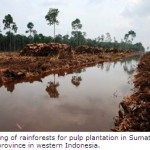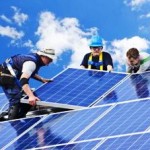Carbon neutrality is a simple concept – but one enmeshed in highly complex detail. It implies that a city should move away from using fossil fuels and reduce its waste outputs to near zero.
Several cities have started on the journey to carbon neutrality – led by the flagship urban development of Masdar City in Abu Dhabi. Some cities may eventually succeed and reach this nirvana. However, others have already fallen by the wayside due to a lack of political commitment and a badly defined roadmap.
The benefits of becoming a carbon neutral city are considerable – including leadership in sustainable development, public transport, urban innovation, and the development of a green economy.
Building a new carbon neutral city from scratch, such as Masdar City, allows the incorporation of innovative design and sustainable development principles from the beginning. This is not a luxury afforded to an existing city whose basic layout and land use patterns have developed over decades or even hundreds of years. This latter category includes the Finnish City of Tampere which recently set the ambitious goal of becoming carbon neutral by 2050.
Tampere as a City

The centre of Tampere
The City of Tampere has a population of over 211,000 and is the third largest city in Finland (located about 175 km north-north-west of the capital Helsinki). It has a long and distinguished industrial history – being a centre for paper production and cotton milling with the city once being dubbed the “Manchester of Finland”.
Despite the closure since the 1960s of many manufacturing and industrial plants, the city still has a strong industrial base – hosting a range of companies including Metso and Sandvik.
The ongoing regeneration and future development of Tampere is set to be based on a range of new economic activities – tele-communications, the creative economy, ubiquitous computing and digital content, bio-health, nano- and micro-systems, intelligent machines, and future energy technologies.
The development of this new 21st century economy is being led by the City’s universities, centres of excellence, and a wide range of international and pan-European R&D programmes.
ECO2, Climate Change Objectives and Targets
The City of Tampere has adopted a series of objectives and commitments concerning climate change.
The Council has set the target of reducing greenhouse gas emissions by more than 20% by the year 2020, more than 40% by the year 2030, and more than 80% by the year 2050. It also plans to increase the share of renewable energy as a percentage of the total energy consumed within the city from 6% to 30% by 2020 (utilizing locally sourced biomass, waste-to-energy systems, energy recovery from local sewerage plants, and increased hydro-electric production). And, just as important, it will give a high priority to energy efficiency measures in existing activities and future city developments.
To implement these challenging targets, the City of Tampere has launched a new programme called ECO2. This new programme has the political support of the current Mayor of Tampere, Timo P. Nieminen, and the City Council.
In order to invigorate the new ECO2 programme, the City of Tampere has hired a team of young staff – mostly from outside the council. The new team will draw together contributions from a wide range of partner organisations within the city. These include the Council’s various departments, the business community, project financiers, universities and research institutes, and community groups. A series of forums are also being established to provide valuable feed-back on a range of sectoral issues (energy utilisation, buildings, transportation, etc.)
New Developments
In Tampere, it is accepted that climate protection is a key resource that stimulates R&D activities – and will create new jobs within the City and surrounding region.
Over the next few years, a series of demonstration and pilot applications will take place in renewable and clean energy technologies, plus cleantech applications including the installation of smart grid systems throughout the city.
The city has committed itself to building all its new properties in alignment with the energy class A requirements. In addition, it also challenges all private builders to take part in the initiative. All renovations will be carried out with the aim of improving energy-efficiency and the residents will be tempted to carry out energy renovations through different competitions. In 2011, Tampere will also see the opening of Finland’s first passive energy kindergarten.
Forthcoming developments in Tampere also include a new Central Arena and business quarter which will be built over the railway lines in the city centre (and will be a case study of energy efficient building) – and the suburb Numi-Sorila, City of the Sun.
Tampere’s main Naistenlahti combined heat and power plant which supplies heat to a district heating scheme was originally designed to use peat as its primary fuel. It has been converted to burn a range of fuels including biomass/wood fuels.
Public transport will feature prominently in the future development of the city. A solution has been reached concerning a local rail-based transport system and the expansion of existing public transport services.
The recently launched development project ‘ElectriCity’ aims to make Tampere a strong centre in the production of advanced car parts and components, and in the conversion from petrol and diesel vehicles to electric vehicles.














